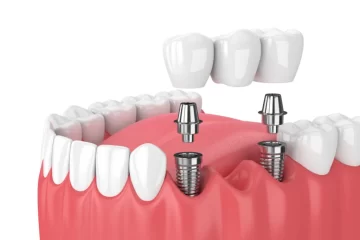First Aid 101: How to Treat a Cut

Did you know that every year, thousands of people cut themselves while carving pumpkins?
Most of us handle domestic knives safely on a daily basis but we’ve probably all experienced a slip of the hand that’s led to a bloody mess. Glasses are also a common source of cuts — especially when you’re washing dishes.
Everyone should know how to treat a cut to avoid getting an infection and to help it heal as quickly as possible. Let’s delve into this first aid basic skill so you’re all set the next time there’s a slip of the knife.
How to Treat a Cut 101: When to See a Doctor
A shocking 2.5% of Americans are living with a chronic wound. You don’t want to become the next one. These pointers can help you decide if you need to see a doctor:
- If the cut is on your hand, foot, or any joint, it’s more likely to get infected
- If it’s located on your eye, throat, neck, chest, genitals, or abdomen, call 911
- If it spurts blood, call 911
- If you have other symptoms, such as nausea or breathing difficulties, call 911
- Do you have diabetes?
- If you cannot control the bleeding, seek immediate medical help
- If the wound was caused by a bite, see a doctor
The likelihood of infection also depends on what caused the cut. Clean cuts from sharp knives are less likely to become infected than cuts from rusty nails.
How to Treat a Deep Cut
Most minor cuts can be treated at home. But deep cuts are more likely to need medical attention, even if they are not very wide.
Always seek medical help if:
- The cut looks deep
- It’s over 1/2 inch in length
- It’s ragged
- Has embedded dirt in it
- Doesn’t hold together easily
If the cut is deep or it’s bleeding a lot, you’ll need a doctor to clean out and stitch the wound.
In certain circumstances, you might also need to get a tetanus shot. Although most people have had it in childhood, you may not have had a booster within the last ten years. If the wound was caused by any kind of bit or by anything old or dirty, get a shot.
Next Steps: How to Stop the Bleeding
The body has its own system to stop bleeding — the clotting process. You want to encourage this. So apply pressure to the wound and if possible, elevate it above the level of your heart.
If you can’t control the bleeding or the wound is bleeding profusely, call 911. Keep applying more bandages or towels over the wound. Don’t remove the first bandage or towel as this can disrupt the clot.
After about ten minutes the bleeding should slow down or stop. If so, there are now two more steps before bandaging the wound — cleaning and disinfecting.
How to Clean a Cut
Cleaning the cut is crucial to reduce the chance of it getting infected. If you fall in the woods or on a gravel surface it’s easy for debris and dirt to get stuck in the wound. There’s a risk you won’t remove it all yourself, so seek medical attention.
If the cut is minor, rinse the cut with tap water. First Aid Supplies Online supplies great portable first aid kits that contain saline. If you have that use it, but if not, it is safe to use tap water in areas where the supply is potable.
How to Disinfect a Cut
Look in your first aid kit for antiseptic wipes or wound spray. This won’t clean the wound but it will reduce the chance of it getting infected. Follow the instructions on the package.
In the past, people were often advised to apply an antibiotic cream to wounds. However, this is only recommended if you already have an infection. If overused, antibiotics can actually cause an irritation of the skin known as contact dermatitis.
As the skin heals, monitor it for signs of infection. If there is none, it’s best to keep it supple with petroleum jelly rather than using antibiotic cream.
How to Bandage a Cut
Small cuts can be covered with a band-aid style dressing.
Once larger cuts are clean and disinfected, place a clean dressing over the wound. Most first aid kits will supply gauze pads, which are ideal because they allow air to get in. This will help the wound to heal faster.
Now you need to wrap the bandage around the cut. The key is to get it secure but not so tight that it interferes with the blood flow. Wrap the bandage at either side of the dressing so that there is at least one inch of coverage all the way around.
Securely tape the bandage in place using medical tape. Check that the circulation to the area and beyond have not been affected. If it has, undo the bandage and tie it again more loosely.
How Often Should I Change the Bandage?
If the cut is still quite wet, you should change the bandage frequently. If it’s dry, change it once a day.
Keep an eye on the wound, monitoring it for signs of infection. These include:
- Heat around the wound
- Swelling
- Pus or other fluids
- Pain
If you have diabetes, a vascular condition, or a compromised immune system, be very careful to monitor any potential signs of infection.
Cuts and Scrapes That Heal Quickly
Now you know how to treat a cut, you’ll be prepared next time you or a friend gets injured. If in doubt, seek medical attention. Stitches can help wounds to heal more quickly and prevent infections.
But if the cut is small and manageable, follow this guide on how to treat an open wound. You’ll be able to keep the wound clean and protected which will help it to heal as quickly as possible.
For more helpful hints and tips on staying in peak condition, check out our health blogs today!










